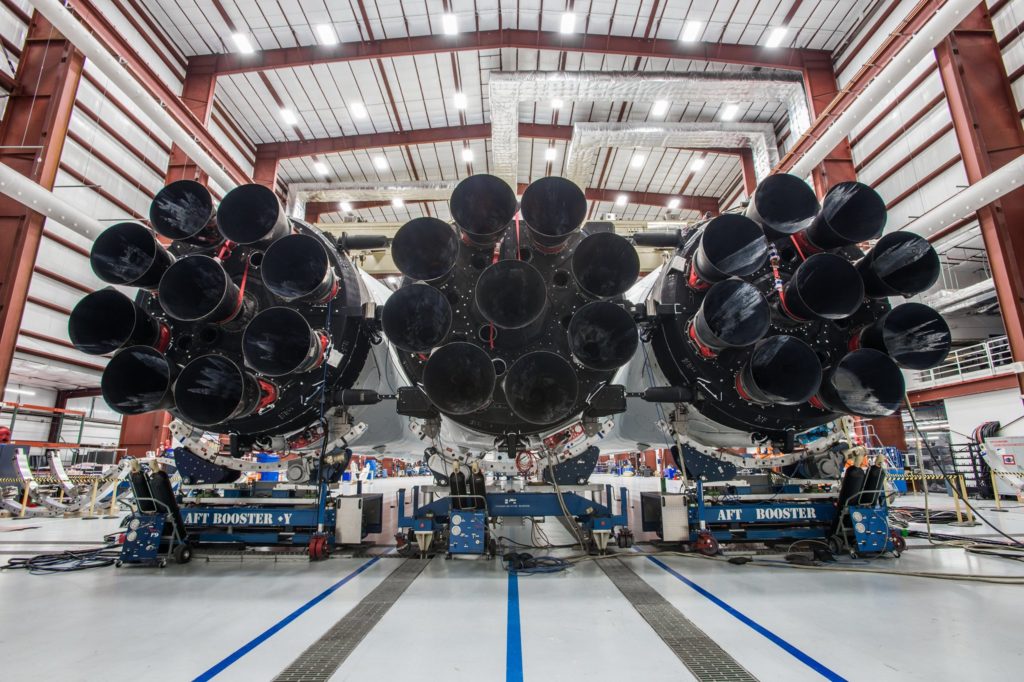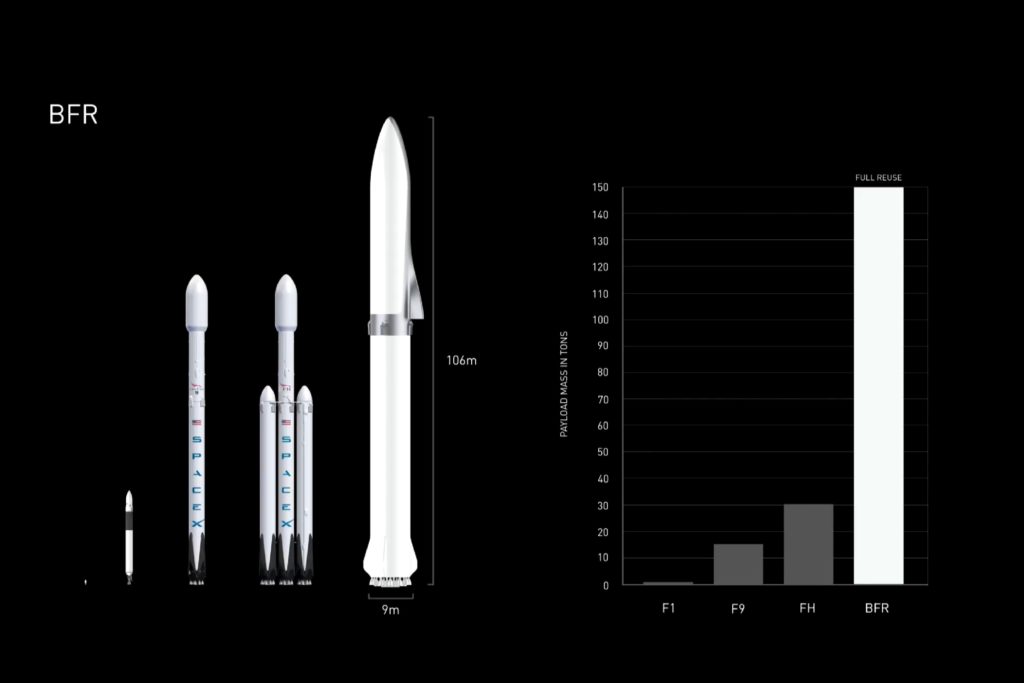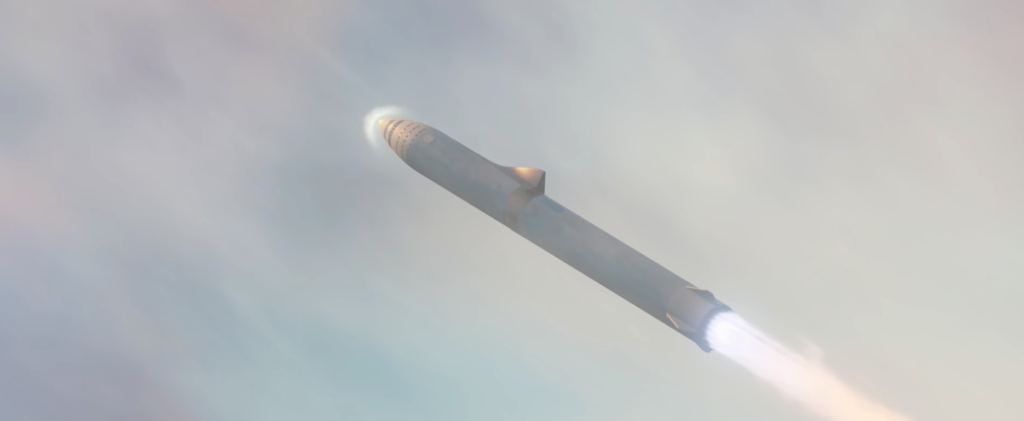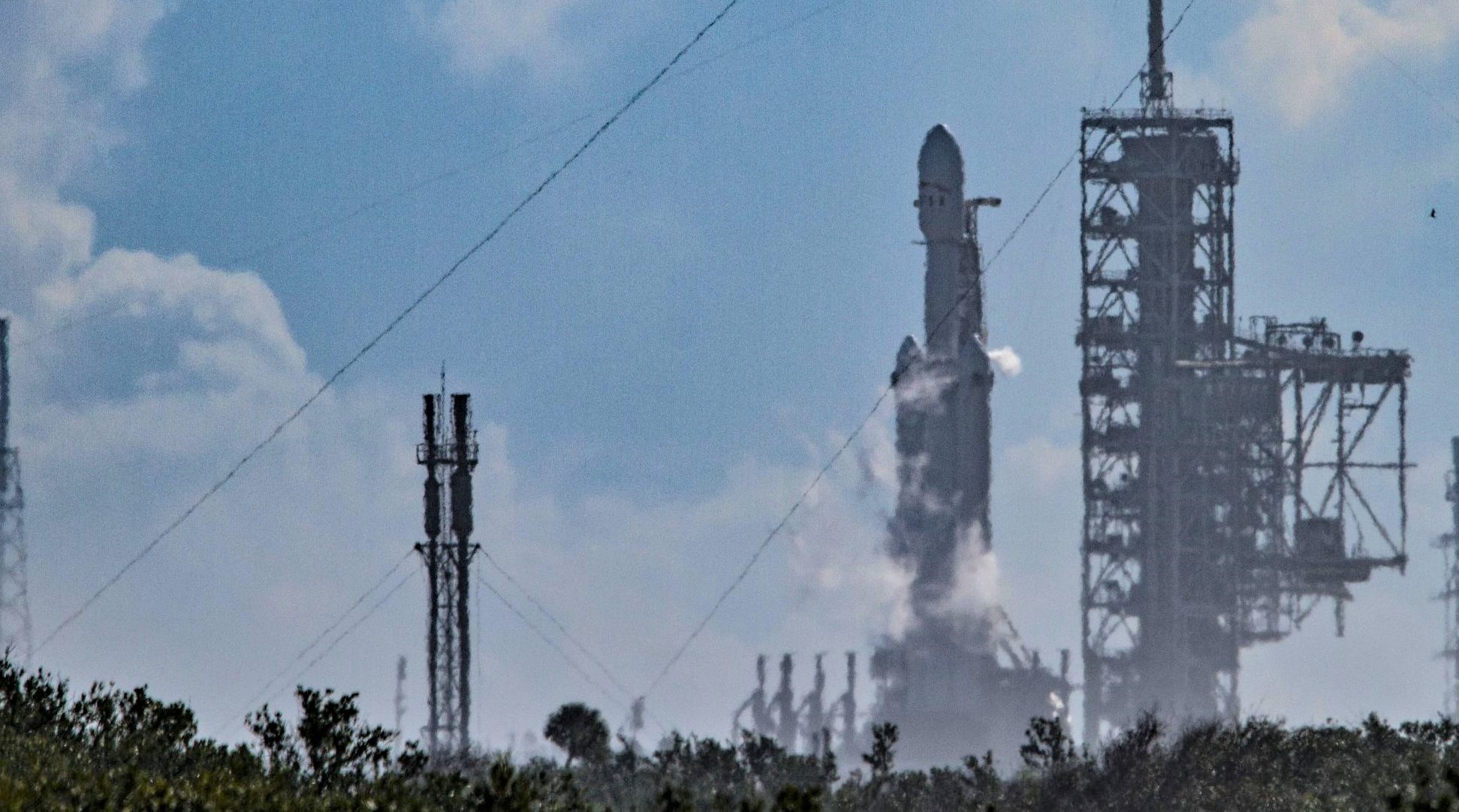
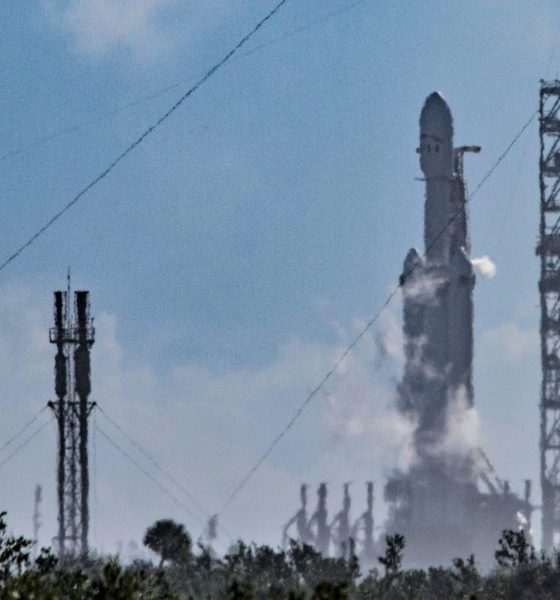
SpaceX
SpaceX Falcon Heavy completes successful rehearsal, static fire pushed back due to bug in launch pad hardware
More than a decade after its 2005 public conception, SpaceX is closer than ever to the first launch Falcon Heavy, the company’s newest rocket. Earlier this afternoon, the vehicle was aiming for its first static fire test, in which all 27 of its engines would be ignited (nearly) simultaneously in order to test procedures and the rocket itself. This attempt was sadly scrubbed, but only after the vehicle apparently completed a successful wet dress rehearsal, which saw Falcon Heavy fully loaded with propellant. According to Orlando’s News 13, the attempt was scrubbed only after one of eight hold-down clamps showed signs of bugs.
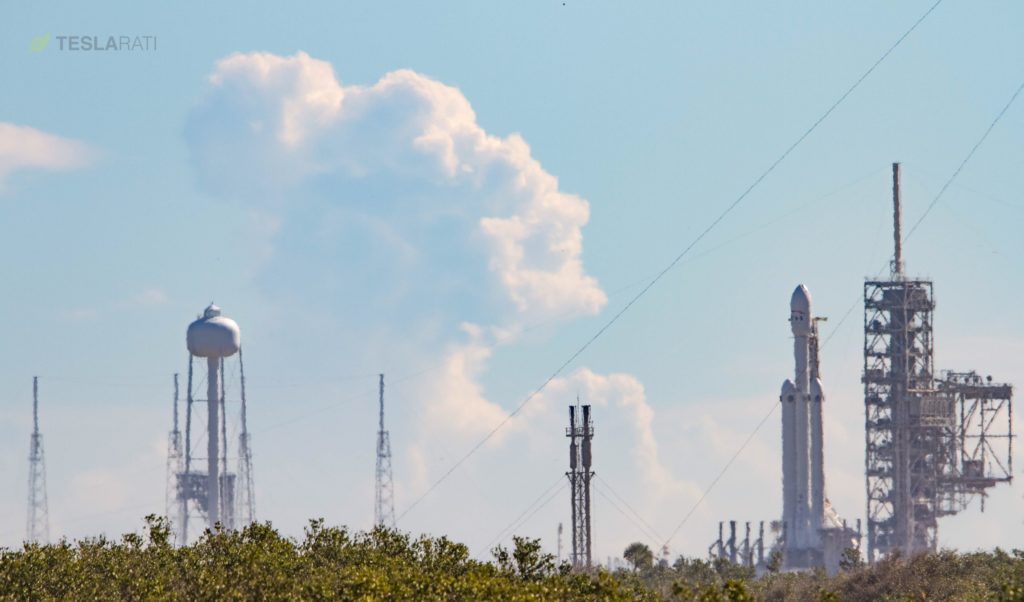
Falcon Heavy vertical at Pad 39A on Thursday, January 11. After a successful rehearsal, the static fire was scrubbed due to a small hardware bug. (Tom Cross/Teslarati)
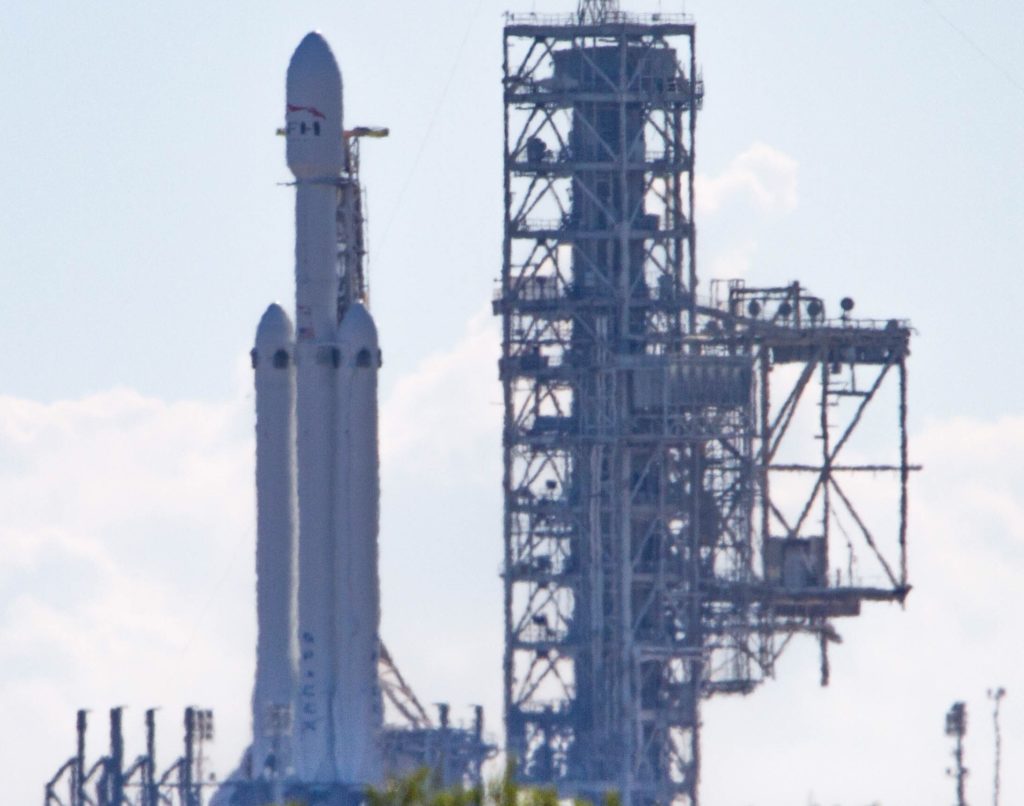
Falcon Heavy vertical at Pad 39A on Thursday, January 11. After a successful rehearsal, the static fire was scrubbed due to a small hardware bug. (Tom Cross/Teslarati)
While Falcon Heavy is not explicitly critical for SpaceX’s near-term launch business and its loftier future goals, the development and operation of such a massive launch vehicle will likely serve as a strong foundation as the company transitions more aggressively into the design, engineering, and manufacture of its still-larger BFR series of rocket boosters and upper stages. Falcon Heavy stands approximately as tall as Falcon 9 at around 70 m (230 ft), but features three times the thrust and a little less than three times the weight of SpaceX’s workhorse rocket. With 27 Merlin 1D engines to Falcon 9’s namesake nine, Falcon Heavy’s 22,800 kN (5,000,000 lbf) of thrust is a nearly inconceivably amount of power, equivalent to twenty Airbus A380 passenger jets at full throttle.
Why is Falcon Heavy important?
If SpaceX manages to pull off Falcon Heavy as a successful and reliable launch vehicle on the order of its reasonably successful Falcon 9, BFR may well be an easier vehicle to develop and operate, thanks to its single-core design. As Musk himself has discussed over the last year or so, the problem of safely and reliably distributing the thrust of Heavy’s side cores to the center core was unexpectedly difficult, as were the issues of igniting all 27 Merlin 1Ds and safely separating the side cores while in flight. Ultimately, the payload improvement (while in a fully reusable mode of operation) was quite small, particularly for the geostationary missions that make up essentially all prospective Falcon Heavy customer missions.
The additional complexity of recovery and refurbishing three separate Falcon 9 boosters almost simultaneously likely serves to only worsen the vehicle’s potential payoff, although the upcoming Block 5 iteration of Falcon 9 may partially improve the vehicle’s ease of operation. If Block 5 is indeed as reusable as SpaceX intends to make it, then a handful of Block 5 Falcon Heavy vehicles could presumably maintain a decent launch cadence for the vehicle without requiring costly and time-consuming shipping all over the continental US.
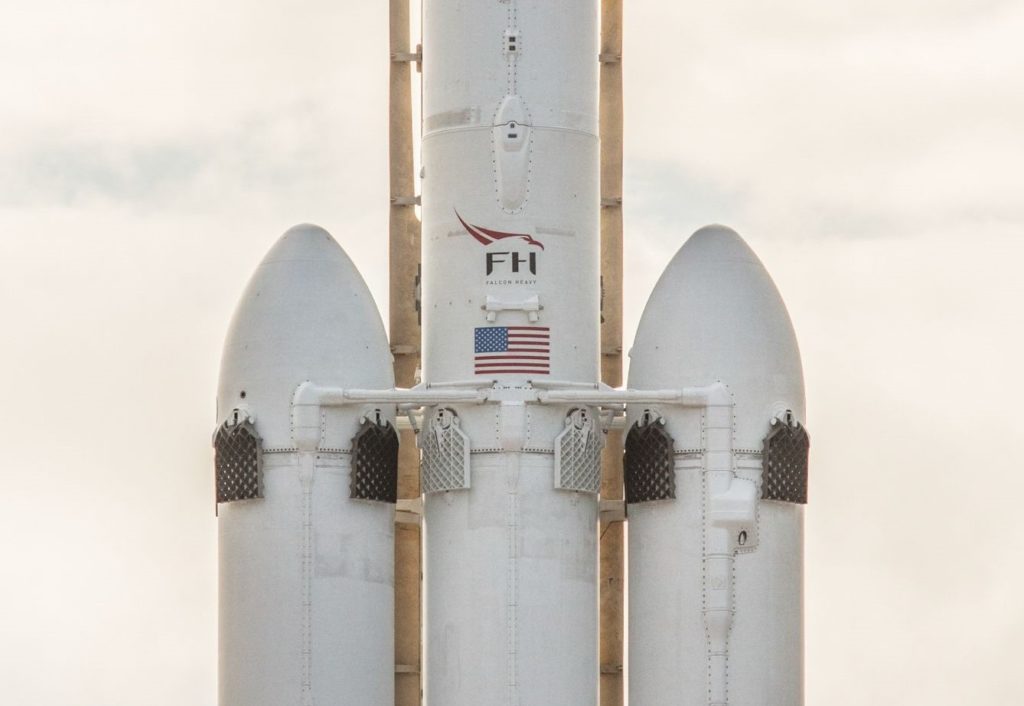
A closeup of Falcon Heavy’s three first stages, all featuring grid fins. The white bars in the center help to both distribute stress loads and separate the side cores from the center booster after launch. (SpaceX)
Nevertheless, the (hopefully successful) experience that will follow the launch and recovery operation of a super heavy-lift launch vehicle (SHLV) with ~30 first stage engines will be invaluable for SpaceX’s interplanetary goals. While BFR will be free of the complexity Falcon Heavy’s triple-core first stage added, it is still a massive vehicle that absolutely dwarfs anything SpaceX has attempted before. BFR in its 2017 iteration would mass around three times that of Falcon Heavy and feature 30 Raptor engines capable of approximately 53,000 kN (12,000,000 lbf) of thrust at liftoff, around 2.5x that of Heavy. Many, many other features mean that BFR and particularly BFS will be extraordinarily difficult to realize: BFS alone will be treading into truly unprecedented areas of spaceflight with the scale, longevity, and reusability it is intended to achieve while comfortably ferrying dozens of astronauts to and from Mars and the Moon.
However, the scale of BFR is equivalent to that of the famous Saturn V rocket that took astronauts to the Moon in the 1960s and 70s. In other words, while still dumbfoundingly massive and unprecedented in the modern era, rockets at the scale of BFR do in fact have a precedent of success, which lends the effort considerable plausibility, at least at proof-of-concept level. As of September 2017, Elon Musk suggested that SpaceX was aiming to begin construction of the first BFS (Big ____ Spaceship) by the end of Q2 2018, a truly Muskian deadline that probably wont hold. Still, if construction of the first prototype begins at any point in 2018, it will bode well for SpaceX’s aggressive timelines.
- Falcon Heavy’s three boosters and 27 Merlin 1D engines on full display. (SpaceX)
- BFR shown to scale with Falcon 1, 9, and Heavy. (SpaceX)
- .While SpaceX’s own visualizations are gorgeous and thrilling in their own rights, Romax’s interpretation adds an unparalleled level of shock and awe. (SpaceX)
In the meantime, BFR’s precursor Falcon Heavy has effectively completed its first wet dress rehearsal, although the static fire attempt was scrubbed for the day. This is understandable for such a complex and untested vehicle, especially after SpaceX’s exceptionally quick modifications to Pad 39A. While unofficial, word is that an issue with one of the Transport/Erector/Launcher’s (TEL) eight separate launch clamps caused the scrub. Those launch clamps ensure that the massive vehicle would stay put during a static fire, and the status of those clamps would be especially important during such an unusually long static fire of such a powerful rocket.
Stay tuned for updates on SpaceX’s upcoming launches and Falcon Heavy’s next static fire attempt, likely within the next several days. The vehicle’s inaugural launch date is effectively up in the air until the static fire has been successfully completed, but as of yesterday SpaceX was understood to be targeting January 26th. Delays are to be expected.
Follow along live as Teslarati’s launch photographer Tom Cross weathers the delays and covers the static fire attempt live from Cape Canaveral.

Elon Musk
SpaceX maintains unbelievable Starship target despite Booster 18 incident
It appears that it will take more than an anomaly to stop SpaceX’s march towards Starship V3’s refinement.
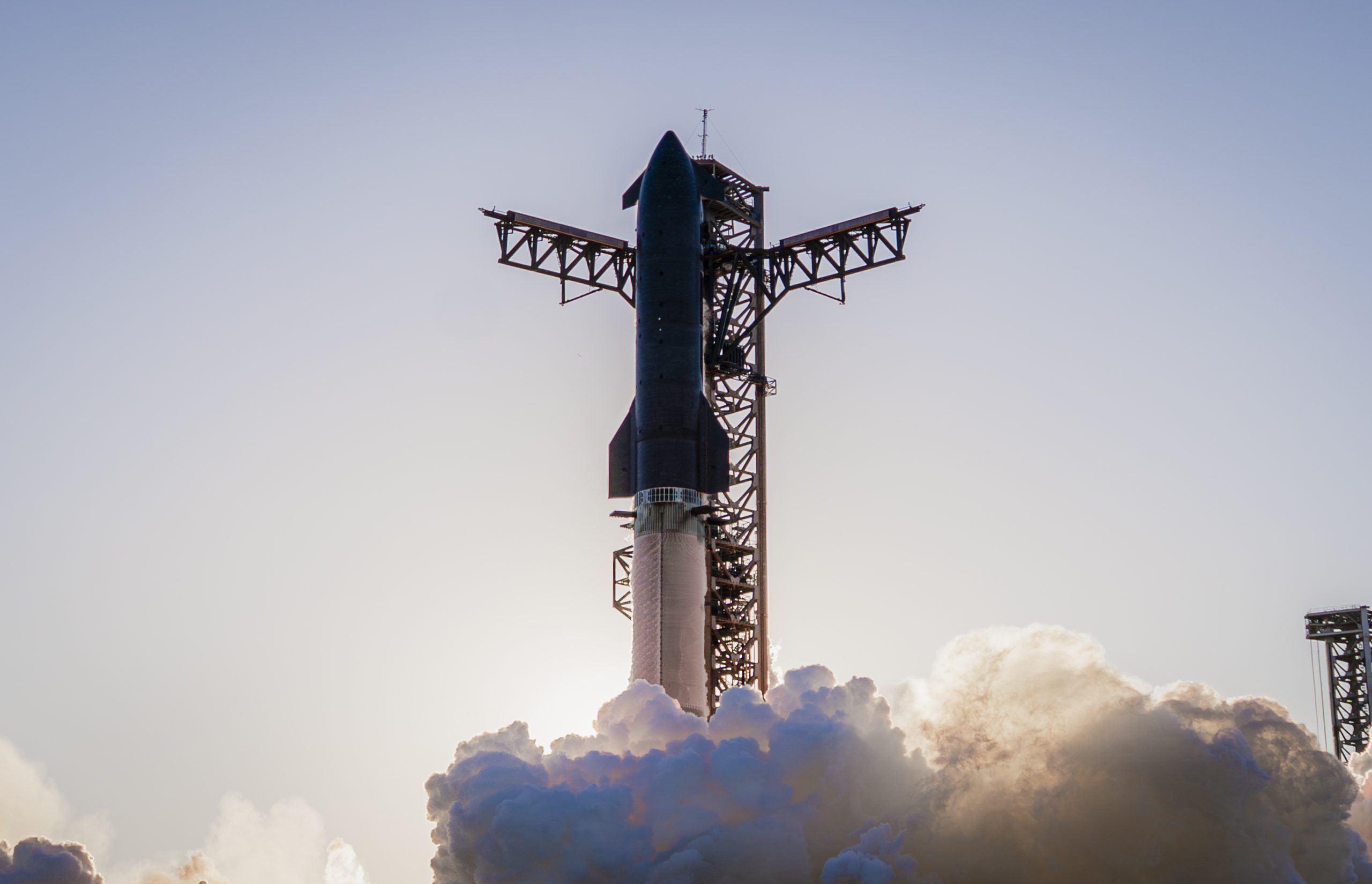
SpaceX recently shared an incredibly ambitious and bold update about Starship V3’s 12th test flight.
Despite the anomaly that damaged Booster 18, SpaceX maintained that it was still following its plans for the upgraded spacecraft and booster for the coming months. Needless to say, it appears that it will take more than an anomaly to stop SpaceX’s march towards Starship V3’s refinement.
Starship V3 is still on a rapid development path
SpaceX’s update was posted through the private space company’s official account on social media platform X. As per the company, “the Starbase team plans to have the next Super Heavy booster stacked in December, which puts it on pace with the test schedule planned for the first Starship V3 vehicle and associated ground systems.”
SpaceX then announced that Starship V3’s maiden flight is still expected to happen early next year. “Starship’s twelfth flight test remains targeted for the first quarter of 2026,” the company wrote in its post on X.
Elon Musk mentioned a similar timeline on X earlier this year. In the lead up to Starshp Flight 11, which proved flawless, Musk stated that “Starship V3 is a massive upgrade from the current V2 and should be through production and testing by end of year, with heavy flight activity next year.” Musk has also mentioned that Starship V3 should be good enough to use for initial Mars missions.
Booster 18 failure not slowing Starship V3’s schedule
SpaceX’s bold update came after Booster 18 experienced a major anomaly during gas system pressure testing at SpaceX’s Massey facility in Starbase, Texas. SpaceX confirmed in a post on X that no propellant was loaded, no engines were installed, and personnel were positioned at a safe distance when the booster’s lower section crumpled, resulting in no injuries.
Still, livestream footage showed significant damage around the liquid oxygen tank area of Booster 18, leading observers to speculate that the booster was a total loss. Booster 18 was among the earliest vehicles in the Starship V3 series, making the failure notable. Despite the setback, Starship V3’s development plans appear unchanged, with SpaceX pushing ahead of its Q1 2026 test flight target.
Elon Musk
SpaceX issues statement on Starship V3 Booster 18 anomaly
The incident unfolded during gas-system pressure testing at the company’s Massey facility in Starbase, Texas.

SpaceX has issued an initial statement about Starship Booster 18’s anomaly early Friday. The incident unfolded during gas-system pressure testing at the company’s Massey facility in Starbase, Texas.
SpaceX’s initial comment
As per SpaceX in a post on its official account on social media platform X, Booster 18 was undergoing gas system pressure tests when the anomaly happened. Despite the nature of the incident, the company emphasized that no propellant was loaded, no engines were installed, and personnel were kept at a safe distance from the booster, resulting in zero injuries.
“Booster 18 suffered an anomaly during gas system pressure testing that we were conducting in advance of structural proof testing. No propellant was on the vehicle, and engines were not yet installed. The teams need time to investigate before we are confident of the cause. No one was injured as we maintain a safe distance for personnel during this type of testing. The site remains clear and we are working plans to safely reenter the site,” SpaceX wrote in its post on X.
Incident and aftermath
Livestream footage from LabPadre showed Booster 18’s lower half crumpling around the liquid oxygen tank area at approximately 4:04 a.m. CT. Subsequent images posted by on-site observers revealed extensive deformation across the booster’s lower structure. Needless to say, spaceflight observers have noted that Booster 18 would likely be a complete loss due to its anomaly.
Booster 18 had rolled out only a day earlier and was one of the first vehicles in the Starship V3 program. The V3 series incorporates structural reinforcements and reliability upgrades intended to prepare Starship for rapid-reuse testing and eventual tower-catch operations. Elon Musk has been optimistic about Starship V3, previously noting on X that the spacecraft might be able to complete initial missions to Mars.
Elon Musk
SpaceX Starship Version 3 booster crumples in early testing
Photos of the incident’s aftermath suggest that Booster 18 will likely be retired.

SpaceX’s new Starship first-stage booster, Booster 18, suffered major damage early Friday during its first round of testing in Starbase, Texas, just one day after rolling out of the factory.
Based on videos of the incident, the lower section of the rocket booster appeared to crumple during a pressurization test. Photos of the incident’s aftermath suggest that Booster 18 will likely be retired.
Booster test failure
SpaceX began structural and propellant-system verification tests on Booster 18 Thursday night at the Massey’s Test Site, only a few miles from Starbase’s production facilities, as noted in an Ars Technica report. At 4:04 a.m. CT on Friday, a livestream from LabPadre Space captured the booster’s lower half experiencing a sudden destructive event around its liquid oxygen tank section. Post-incident images, shared on X by @StarshipGazer, showed notable deformation in the booster’s lower structure.
Neither SpaceX nor Elon Musk had commented as of Friday morning, but the vehicle’s condition suggests it is likely a complete loss. This is quite unfortunate, as Booster 18 is already part of the Starship V3 program, which includes design fixes and upgrades intended to improve reliability. While SpaceX maintains a rather rapid Starship production line in Starbase, Booster 18 was generally expected to validate the improvements implemented in the V3 program.
Tight deadlines
SpaceX needs Starship boosters and upper stages to begin demonstrating rapid reuse, tower catches, and early operational Starlink missions over the next two years. More critically, NASA’s Artemis program depends on an on-orbit refueling test in the second half of 2026, a requirement for the vehicle’s expected crewed lunar landing around 2028.
While SpaceX is known for diagnosing failures quickly and returning to testing at unmatched speed, losing the newest-generation booster at the very start of its campaign highlights the immense challenge involved in scaling Starship into a reliable, high-cadence launch system. SpaceX, however, is known for getting things done quickly, so it would not be a surprise if the company manages to figure out what happened to Booster 18 in the near future.
